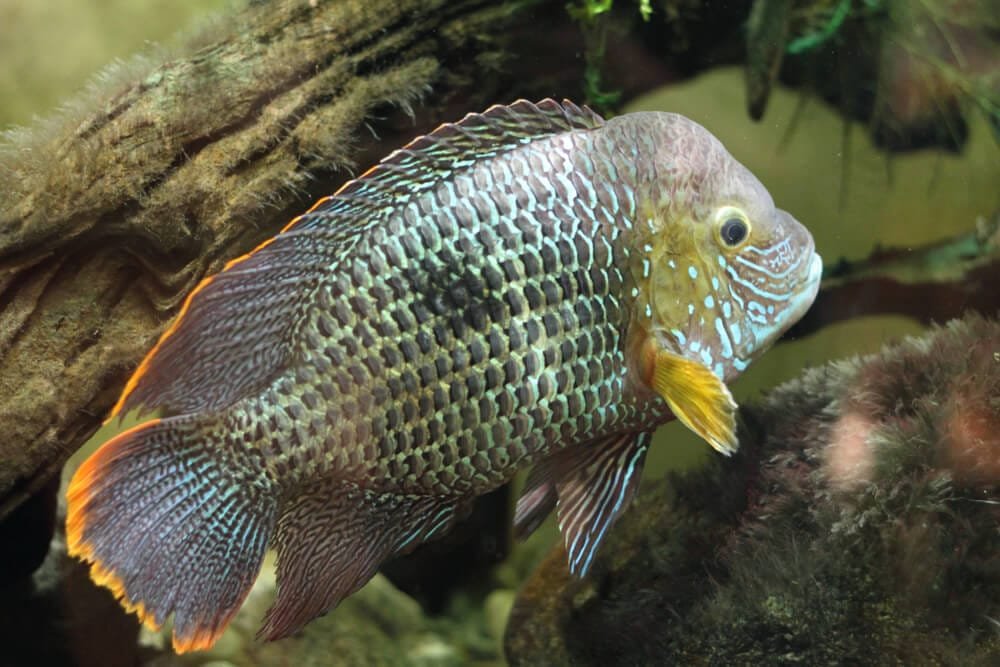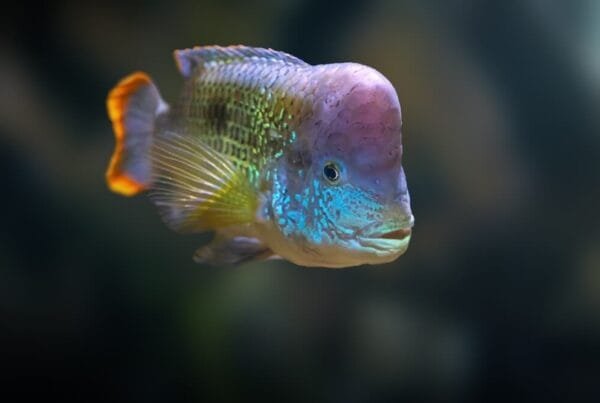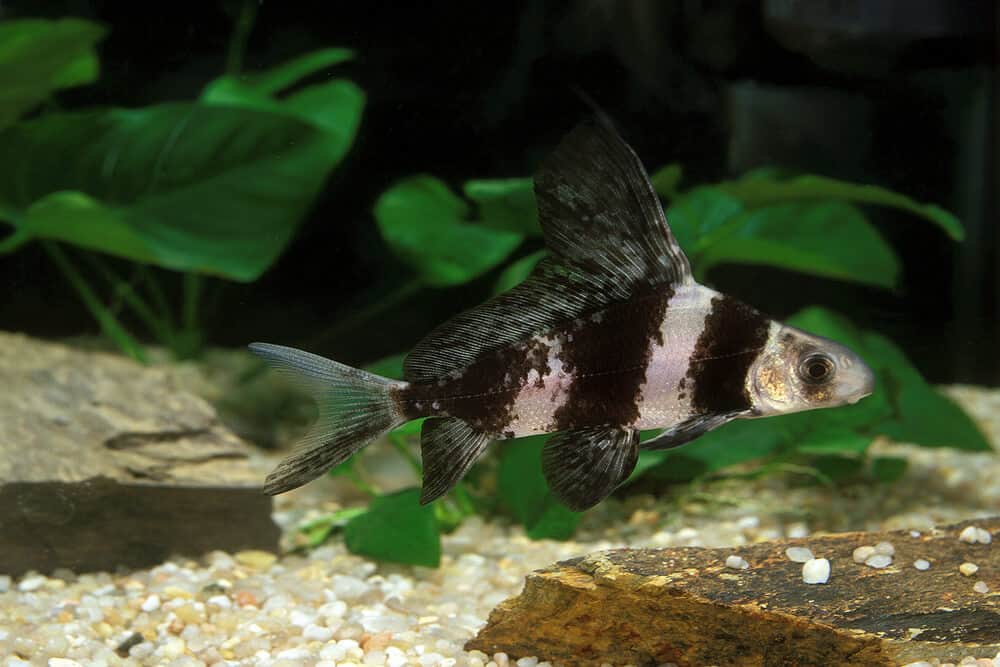In this article, you will gain valuable insights into the intriguing world of green terror cichlids and their aggressive behavior. Understanding the reasons behind their aggression is crucial for any fish enthusiast or newbie looking to keep these captivating creatures in their tanks. From territorial disputes to mating rituals, delve into the complexities of green terror cichlid aggression and learn how to create a harmonious environment for these magnificent aquatic beings.
Understanding Aggression in Green Terror Cichlids
Introduction to Green Terror Cichlids
Green Terror Cichlids, also known as Andinoacara rivulatus, are a popular freshwater fish species among aquarium enthusiasts. Their vibrant green coloration, unique behavior, and impressive size make them an interesting addition to any aquarium. However, it is important to understand their aggressive nature in order to successfully maintain them in a captive environment.
Natural Habitat and Behavior
Green Terror Cichlids are native to the rivers and streams of South America, specifically in the Amazon and Orinoco basins. In the wild, they inhabit areas with dense vegetation and rocky structures, where they establish territories. These territories are fiercely defended, and any intruders are met with aggressive displays and physical confrontations.
Social Structure
Green Terror Cichlids are known to have a hierarchical social structure. In a group of Cichlids, there is usually one dominant male who assumes the role of protector and breeder. The other individuals in the group, both male and female, are subservient to the dominant male and often exhibit submissive behavior.
The Role of Aggression in Reproductive Behavior
Aggression plays a significant role in the reproductive behavior of Green Terror Cichlids. During breeding season, the dominant male becomes highly territorial and aggressive, defending his chosen spawning site and potential mates from other males. He will display vivid colors, flare his fins, and engage in physical combat with rival males to establish his dominance.
Factors Influencing Aggression in Green Terror Cichlids
Various factors can influence the aggression levels displayed by Green Terror Cichlids. Water quality, tank size, availability of hiding spots, competition for resources, and temperature are some important factors to consider. Understanding these factors and managing them appropriately can help minimize aggression in a captive environment.
Aggressive Behavior Displayed by Green Terror Cichlids
Territorial Aggression
Territorial aggression is a common behavior observed in Green Terror Cichlids. They will fiercely defend their chosen territory from intruders, engaging in aggressive displays and physical combat. This behavior is particularly noticeable during breeding season when the dominant male becomes highly territorial.
Intraspecific Aggression
Green Terror Cichlids also display aggression towards members of their own species. This intra-specific aggression is most commonly observed between rival males competing for dominance and mating rights. Aggressive behaviors include fin flaring, charging, biting, and potentially causing physical harm.
Aggression Towards Conspecifics and Heterospecifics
Not only do Green Terror Cichlids display aggression towards their own species, but they may also exhibit aggression towards other fish species in the aquarium. This heterospecific aggression is often seen when the cichlids perceive other fish as potential threats or competitors for resources.
Sexual Aggression
Sexual aggression is a prominent behavior during the breeding season. The dominant male will aggressively court the female, often chasing her and displaying his vibrant colors and impressive fin extensions. This aggressive behavior is aimed at impressing the female and establishing his dominance as a potential mate.
Parental Aggression
Once the eggs are laid and hatched, Green Terror Cichlid parents become highly protective and display parental aggression. They will guard the eggs and fry against potential threats, showing aggressive behaviors towards any perceived danger. This aggression is crucial for the survival of the offspring.
Physical and Behavioral Characteristics of Aggressive Green Terror Cichlids
Coloration and Aggression
The coloration of Green Terror Cichlids can serve as an indicator of aggression. During aggressive displays, their usually vibrant green color intensifies, and they may exhibit dark bars or spots on their body. This change in coloration is a visual signal to competitors or potential mates.
Body Size and Aggression
Body size also plays a role in the aggression levels of Green Terror Cichlids. Larger individuals tend to assert dominance more easily and display more aggressive behaviors towards smaller or younger fish. However, it is crucial to ensure that the tank size can accommodate the growth of these fish to prevent overcrowding and aggression.
Fin Extension and Aggression
The extension of fins is another visual cue that can indicate aggression in Green Terror Cichlids. When feeling threatened or during courtship displays, they will extend their fins to appear more prominent and intimidating. Fin extensions are often accompanied by vigorous movements and posturing.
Patterns of Aggressive Behavior
Aggressive behavior in Green Terror Cichlids can vary depending on the situation. Common aggressive behaviors include charging, biting, tail-slapping, and fin-nipping. These behaviors are used to establish dominance, defend territories, or intimidate rivals.
Aggression During Feeding
Feeding time can also trigger aggression in Green Terror Cichlids, particularly when there is competition for food. They may engage in aggressive behaviors towards tank mates, trying to secure the best feeding spots or access to food resources. It is essential to manage feeding strategies to reduce aggression during meal times.
Aggressive Displays and Communication in Green Terror Cichlids
Threat Displays
Green Terror Cichlids employ several threat displays to intimidate rivals or potential threats. These displays can include flaring fins, erecting dorsal spines, gaping their mouths, and adopting a characteristic S-shape posture. These visual cues serve as warnings to competitors or intruders.
Intimidation Techniques
In addition to visual displays, Green Terror Cichlids may employ intimidation techniques to establish dominance or scare away competitors. These techniques can include lunging, charging, and aggressive posturing. By performing these actions, they aim to discourage potential rivals from engaging in physical confrontations.
Vocalizations and Sounds
While less common than visual displays, Green Terror Cichlids may also produce vocalizations and sounds during aggressive interactions. These sounds are typically low-frequency rumblings or grunting noises. While the exact purpose of these vocalizations is not fully understood, they may serve as additional communication signals during aggressive encounters.
Visual Signals
Visual signals play a crucial role in aggressive displays and communication among Green Terror Cichlids. The intensity of coloration, extended fins, and body posture all serve as visual cues to convey dominance, aggression, or submission. These signals help establish social hierarchies and minimize physical confrontations.
Chemical Signals
Green Terror Cichlids also communicate through chemical signals, releasing pheromones that can influence the behavior of other fish in their proximity. These chemical cues can convey information about reproductive readiness, dominance status, and territorial boundaries. They can also trigger or modulate aggressive behavior in conspecifics.
Aggression and Breeding in Green Terror Cichlids
Aggression as Part of Courtship
Aggression plays a significant role in the courtship and mating behaviors of Green Terror Cichlids. The dominant male will aggressively court the female, engaging in aggressive displays such as fin extensions, vibrant coloration, and chasing behaviors. This aggressive courting behavior helps establish the male’s dominance and attractiveness to the female.
Aggression During Pair Formation
When Green Terror Cichlids form pairs for breeding, there may be initial aggression towards potential mates. This aggression is part of the pair formation process, as the dominant male establishes his authority over the female. However, once a pair bond is established, aggression typically decreases.
Protective Aggression Towards Eggs and Fry
After spawning, Green Terror Cichlid parents display protective aggression towards their eggs and fry. They will guard the nest, attacking any perceived threats or intruders that come near the developing offspring. This aggressive behavior is crucial for the survival of the young.
Territorial Aggression During Spawning
During the spawning process, territorial aggression becomes more pronounced in Green Terror Cichlids. The dominant male will defend the chosen spawning site and aggressively drive away any potential rivals or intruders. This territorial aggression ensures the success of the breeding pair and the survival of their offspring.
Aggression Between Mating Pairs
While Green Terror Cichlid pairs usually cooperate in raising their offspring, aggression can still occur between mates. This aggression is often in response to perceived intrusions or threats to the nest or fry. It is important to monitor the intensity of aggression between mating pairs to ensure the well-being of both parents and the survival of their young.
Environmental Factors and Aggression
Water Quality and Aggression
Water quality has a significant impact on the overall health and behavior of Green Terror Cichlids. Poor water conditions, such as high ammonia or nitrite levels, can lead to increased stress and aggression. It is important to maintain optimal water parameters and perform regular water changes to reduce aggression.
Tank Size and Aggression
The size of the aquarium can also influence the aggression levels of Green Terror Cichlids. In smaller tanks, territorial disputes and aggression are more likely to occur due to limited space. Providing an adequately sized tank that allows for the establishment of territories can help minimize aggression among tank inhabitants.
Availability of Hiding Spots and Aggression
The availability of hiding spots in the aquarium can play a crucial role in mitigating aggression among Green Terror Cichlids. Providing ample hiding places, such as caves or rock structures, allows fish to establish their territories and provides refuge during aggressive encounters. These hiding spots help reduce stress and the need for physical confrontations.
Competition for Resources and Aggression
Competition for resources, such as food and territory, can trigger aggressive behavior in Green Terror Cichlids. Ensuring an adequate food supply and providing multiple feeding spots can help reduce aggression during feeding times. Additionally, offering a variety of feeding strategies, such as using floating pellets or sinking foods, can help distribute resources more evenly.
Temperature and Aggression
Temperature fluctuations can affect the aggression levels of Green Terror Cichlids. Rapid changes in temperature or extremes outside of their preferred range can induce stress and lead to increased aggression. Maintaining a stable and appropriate temperature for the species can help minimize aggression and promote overall well-being.
Aggression and Tank Mates
Choosing Compatible Tank Mates
When considering tank mates for Green Terror Cichlids, it is important to choose species that are compatible in terms of aggression levels and size. Peaceful and non-aggressive species that can hold their ground are ideal tank mates. Additionally, selecting fish that occupy different areas of the tank, such as bottom dwellers or mid-level swimmers, can help reduce aggression.
Aggression Towards Other Cichlids
Green Terror Cichlids are known to be aggressive towards other cichlid species, particularly those of similar size and temperament. Care should be taken when housing them with other cichlids to prevent territorial disputes and physical harm. It is advisable to research the specific compatibility of different cichlid species before introducing them into the same tank.
Aggression Towards Non-Cichlid Species
Green Terror Cichlids can also exhibit aggression towards non-cichlid species in the aquarium. Small, peaceful fish are particularly vulnerable to aggressive behavior and may become targets. It is best to avoid housing these cichlids with delicate or slow-moving species to prevent potential harm.
Introducing New Tank Mates
When introducing new tank mates to an aquarium with Green Terror Cichlids, it is important to proceed with caution. Gradual introductions and monitoring of behavior can help minimize aggression. Providing plenty of hiding spots and visual barriers can also help reduce stress and aggression during the acclimation process.
Managing Aggression in a Community Tank
In a community tank setting, managing aggression among Green Terror Cichlids and other tank mates is crucial. Providing sufficient hiding spots, territories, and visual barriers can help reduce aggression. Regular monitoring of behavior and promptly addressing any signs of increasing aggression can prevent physical harm and ensure a harmonious community.
Managing Aggression in Green Terror Cichlids
Proper Tank Setup and Habitat Enrichment
Creating a suitable tank setup and enriching the habitat can help manage aggression in Green Terror Cichlids. Providing ample space, appropriate tank decorations, and natural hiding places can help establish territories and minimize aggressive encounters. Substrate choices, such as fine sand or gravel, can also create a natural environment that supports their behavioral needs.
Providing Hiding Places and Territories
Green Terror Cichlids require hiding places and territories to establish their dominance and reduce aggression. Adding caves, rock formations, or dense vegetation can provide ample hiding spots and territories for individual fish. These areas create safe spaces where fish can retreat to reduce stress and avoid unnecessary confrontations.
Feeding Strategies to Reduce Aggression
Adopting proper feeding strategies can help decrease aggression during mealtimes. Spacing out multiple feeding spots can prevent competition for food, reducing the likelihood of aggressive encounters. Using sinking pellets or feeding at different levels of the tank can accommodate the feeding preferences of different fish, promoting peaceful coexistence.
Using Breeding Caves or Dividers
Breeding caves or dividers can be useful tools for managing aggression during the breeding process. These structures provide a designated area for breeding pairs, allowing them to establish their own territories and defend their eggs or fry without interference from other tank mates. Separating aggressive individuals during the breeding season can prevent potential harm to other fish.
Separating Aggressive Individuals
In some cases, separating aggressive individuals may be necessary to maintain peace in the aquarium. If one Green Terror Cichlid consistently poses a threat to other fish or causes physical harm, isolating it in a separate tank may be the best solution. This allows the aggressive individual to live without causing harm to others while ensuring the well-being of the tank mates.
Understanding Aggression-Related Health Issues
Stress-Related Health Problems
Aggression-related stress can lead to various health problems in Green Terror Cichlids. Chronic stress weakens the immune system, making fish more susceptible to diseases and infections. Common stress-related health issues include decreased appetite, reduced growth rates, increased susceptibility to parasites, and compromised overall well-being.
Injuries Caused by Aggression
Aggression among Green Terror Cichlids can result in physical injuries. Biting, fin-nipping, and territorial disputes can lead to torn fins, wounds, or even loss of scales. These injuries provide entry points for bacteria, parasites, and infections. Promptly addressing and treating aggression-related injuries is crucial to prevent further complications.
Preventing and Treating Aggression-Related Injuries
Preventing aggression-related injuries involves proactive measures to minimize aggression, such as providing hiding spaces and territories. Promptly isolating injured fish and providing appropriate care, including water treatments and medications, is vital to prevent infections and promote healing. It is crucial to maintain optimal water conditions and monitor the well-being of all tank inhabitants.
Monitoring Aggression-Related Stress Levels
Regular monitoring of aggression-related stress levels is essential in maintaining the health and well-being of Green Terror Cichlids. Observing fish behavior, appetite, and appearance can provide valuable insights into their stress levels. Identifying signs of stress early on allows for timely intervention to prevent escalating aggression and potential health issues.
Conclusion
Understanding aggression in Green Terror Cichlids is crucial for successfully keeping them in a captive environment. Their natural habitat, social structure, and aggressive behavior all play significant roles in their overall behavior and well-being. By carefully managing their environment, monitoring aggression levels, and providing appropriate outlets for their behavior, you can ensure a harmonious and healthy aquarium for these captivating fish.







